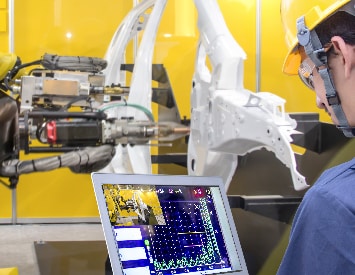Formula 1, often referred to as the pinnacle of motorsport, is a sport that blends cutting-edge engineering with exceptional driving talent.
At the heart of this captivating racing event are the Formula 1 cars, which represent the zenith of automotive engineering. These cars are marvels of modern technology, designed to achieve unparalleled speed, performance, and safety on the racetrack.
The sheer speed and performance of Formula 1 cars are awe-inspiring.
These machines can reach speeds of over 220 mph (354 kph), making them some of the fastest vehicles on the planet. The thrill of witnessing these high-powered vehicles race around the world’s most iconic circuits is undeniably exciting.
The roar of the engines, the precision of the drivers, and the dynamic strategies employed by teams create an electrifying atmosphere that keeps fans on the edge of their seats.
Moreover, the global appeal of Formula 1 is evident through its vast and passionate fan base. Races are hosted on multiple continents, and the sport has a dedicated following in Europe, Asia, the Americas, and beyond.
The diversity of drivers and teams from various nations adds to its international appeal. Formula 1 has become more than just a sport; it’s a cultural phenomenon that unites people from different backgrounds and regions, celebrating the pursuit of excellence in technology and driving.
The History of Speed
Formula 1 had its roots in the early 20th century, with various Grand Prix motor racing events taking place in Europe.
However, the modern Formula 1 World Championship, as we know it today, was officially established in 1950. The Fédération Internationale de l’Automobile (FIA) introduced the inaugural Formula 1 World Championship season to bring together multiple racing events under a standardized set of regulations.
The first Formula 1 car, known as the Alfa Romeo 158, made its debut in the 1950 Formula 1 World Championship. It was designed and built by the Italian engineer Gioachino Colombo. The Alfa Romeo 158 featured a supercharged 1.5-liter straight-8 engine and was known for its speed and competitiveness.
The first-ever Formula 1 World Championship race took place on 13 May 1950, at Silverstone Circuit in the United Kingdom. This race was the British Grand Prix and marked the beginning of the inaugural Formula 1 season. Giuseppe Farina, an Italian driver, won the race driving an Alfa Romeo 158. This historic victory made him the first Formula 1 World Champion.
Since that historic day in 1950, Formula 1 has grown into a global phenomenon. It now features 10 teams and 20 drivers competing in a series of races held all around the world. The sport has continued to evolve, with technological advancements and changes in regulations, making it one of the most popular and prestigious forms of motorsport globally.
The Powerhouse: The Formula 1 Engine
Formula 1 cars are powered by the most advanced and powerful racing engines in the world.
These power units, as they are called, are V6 hybrid turbocharged engines with a 1.6-liter capacity. They generate around 1000 horsepower, enabling the cars to reach speeds of over 220 mph (354 kph). The key to their power lies in their ability to maximize energy efficiency.
Formula 1 engines recover and reuse heat energy, thanks to the Energy Recovery System (ERS), which consists of the MGU-K (Motor Generator Unit – Kinetic) and MGU-H (Motor Generator Unit – Heat). This innovation not only boosts power but also makes F1 cars more environmentally friendly.
Software engineers create the algorithms and control systems that manage the car’s various functions, from engine performance to traction control. These systems optimize performance while ensuring driver safety.
Aerodynamics: The Art of Speed and Downforce
Aerodynamics plays a pivotal role in the performance of Formula 1 cars.
Engineers painstakingly design the car’s body to cut through the air with minimal resistance while generating maximum downforce to keep the car glued to the track. The front and rear wings, along with the car’s diffuser, create the intricate balance required for high-speed stability.
The goal is to strike the perfect equilibrium between reducing drag on straights and increasing downforce in corners.
Moreover, advanced wind tunnel testing and computational fluid dynamics are used to refine every aspect of the car’s aerodynamics.
Carbon Fiber Chassis: The Heart of the Beast
The chassis of a Formula 1 car is a masterpiece of engineering and safety. Formula 1 cars are designed in a highly specialized and intricate manner to optimize their performance on the racetrack.
It’s usually constructed from carbon fiber composites, making it incredibly strong and lightweight.
Material engineers select materials that can withstand the high stresses and forces experienced during races while keeping the car as light as possible.
These monocoque structures are designed to absorb and dissipate the energy in the event of a crash, protecting the driver.

Safety engineers introduced significant advancements in Formula 1.
First, in 2003, they created the HANS (Head and Neck Support) device to protect drivers in the event of an accident. Subsequently, in 2011, energy-absorbing crash structures were introduced. Finally, the Halo device, designed to shield the driver’s head, was introduced in 2018.
Tire Technology: The Connection to the Track
Formula 1 tires differ from normal car tires in several keyways. They are larger with minimal or no tread, use softer and stickier rubber compounds for better grip, are optimized for high operating temperatures during racing, have significantly higher inflation pressures, feature more aggressive camber angles for improved cornering grip, warm up quickly, and are integral to a car’s aerodynamic design.
Tires are the only part of a Formula 1 car that makes contact with the road, and tire technology is a crucial aspect of engineering.
Tire engineers work on the compounds and designs that are tailored to provide optimal grip, durability, and performance in various weather conditions and track surfaces. Engineers must carefully manage tire temperature and wear throughout a race, making tire strategy a critical part of Formula 1 success.
Data and Telemetry: A Continuous Feedback Loop
Formula 1 cars generate an astonishing amount of data during a race.
Hundreds of sensors collect information on the car’s performance, including temperature, tire pressure, engine performance, and more. This data is transmitted to the pit crew in real time, enabling them to make split-second decisions about the car’s setup and strategy.
Electrical engineers design the complex wiring, sensors, and electronic systems in the car. This includes the steering wheel controls, data acquisition, telemetry, and the ERS.
Formula 1 car engineering is a fusion of art and science, where the boundaries of technology are pushed to their limits.
These cars represent the pinnacle of human achievement in speed, safety, and innovation. With every passing season, engineers strive to make these machines even faster and more efficient, solidifying Formula 1’s reputation as a breeding ground for cutting-edge automotive technology.
The relentless pursuit of excellence in engineering makes Formula 1 not just a sport but a fascinating showcase of human ingenuity.
Graham Hill once said, “I am an artist. The track is my canvas, and my car is my brush.”
References


